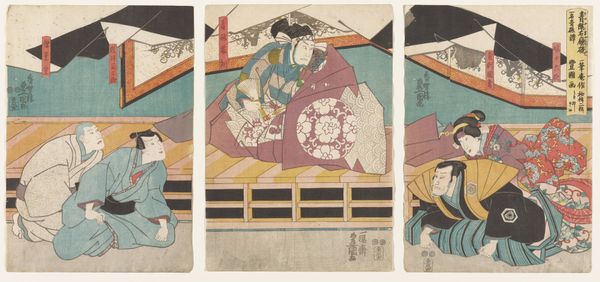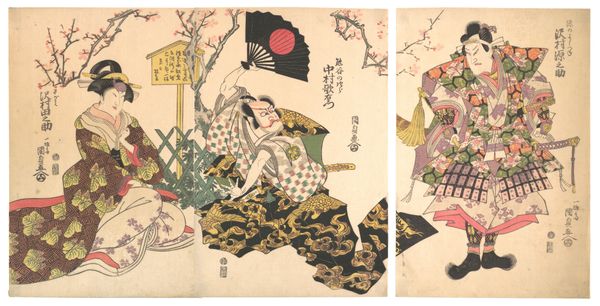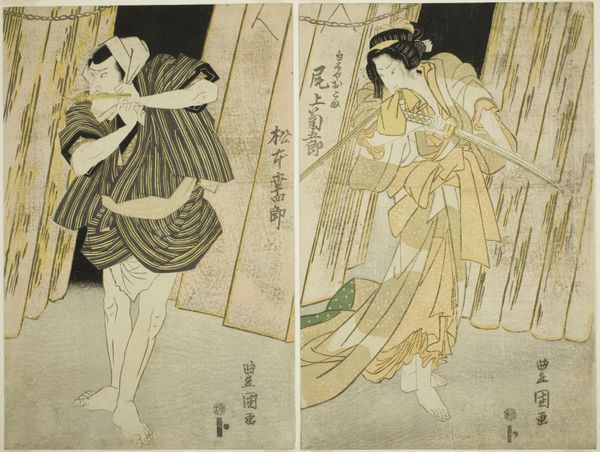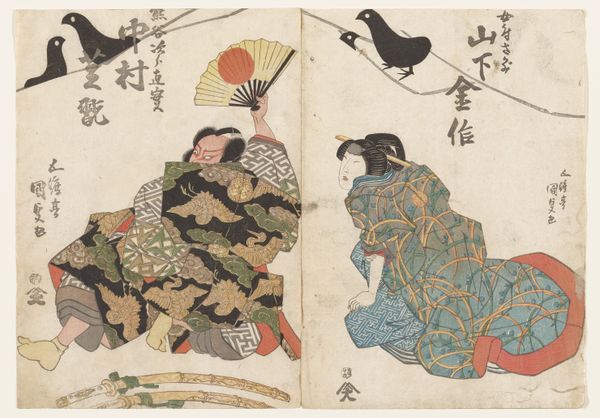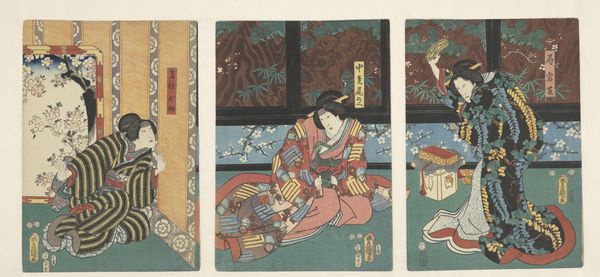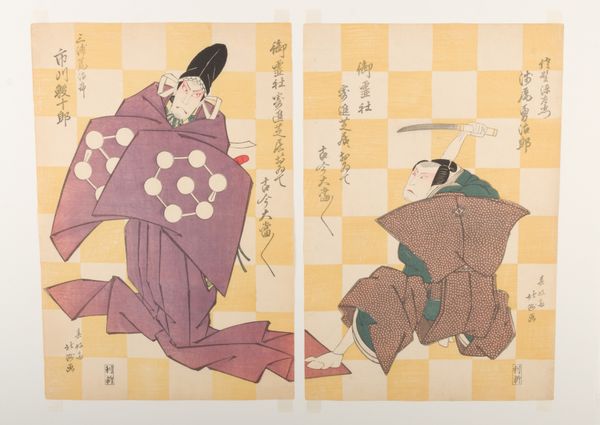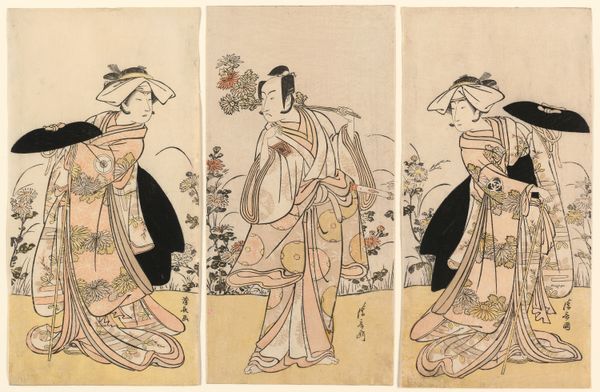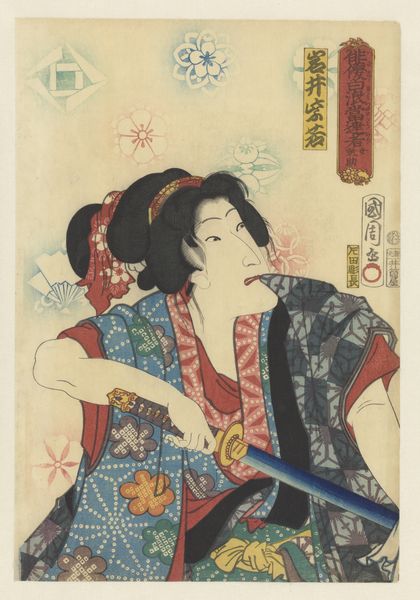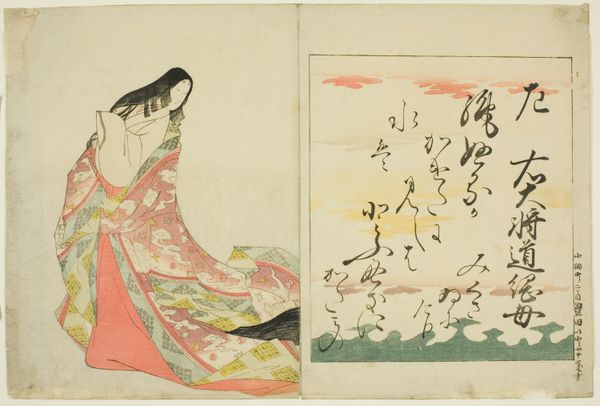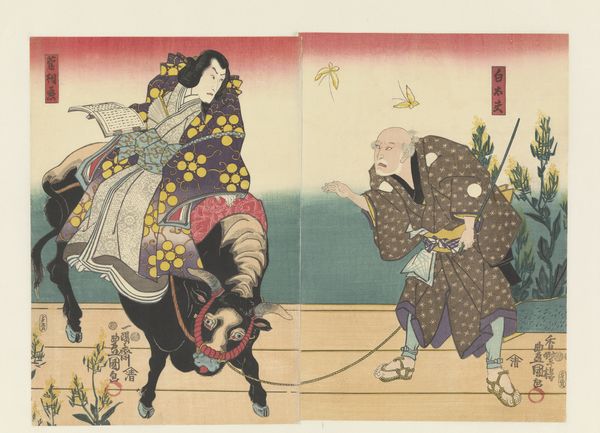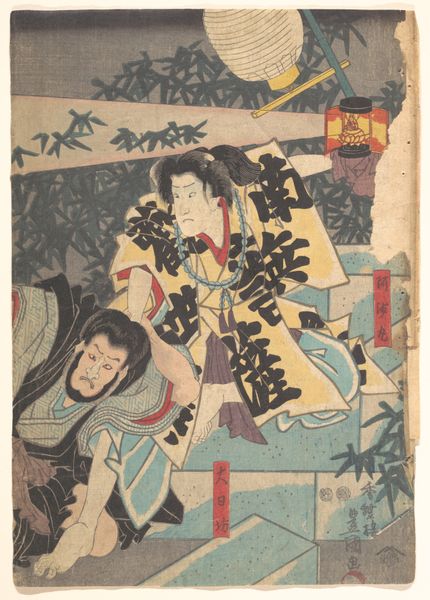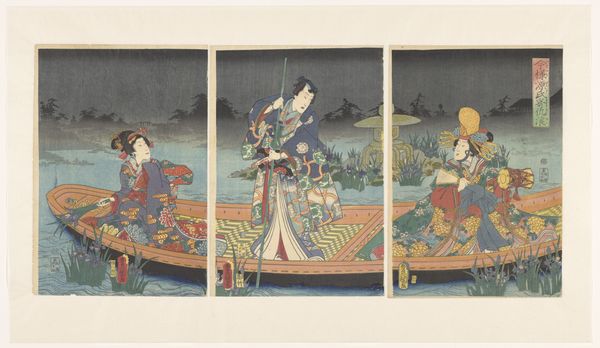
Actors Ichikawa Ebizō V in a quick costume change as Shizuma Ishitarō (R) and Shōgun Tarō Yoshikado (C) and Iwai Tojaku as Oyama Possibly 1837
0:00
0:00
print, ink, color-on-paper
#
muted colour palette
# print
#
collage layering style
#
fashion and textile design
#
japan
#
handmade artwork painting
#
historical fashion
#
ink
#
color-on-paper
#
wedding around the world
#
watercolour bleed
#
watercolour illustration
#
watercolor
#
bridal fashion
Dimensions: 14 × 28 3/4 in. (35.6 × 73 cm) (vertical ōban triptych)
Copyright: Public Domain
Editor: This striking triptych, "Actors Ichikawa Ebizo V in a quick costume change as Shizuma Ishitaro (R) and Shogun Taro Yoshikado (C) and Iwai Tojaku as Oyama," possibly from 1837, created by Utagawa Kunisada using ink and color on paper, really grabs you with its intense depiction of kabuki actors. I'm curious, with your knowledge of the period, what do you see happening politically or socially that would be influencing Kunisada to make such a print? Curator: Well, it is crucial to consider this print in the context of censorship within the Edo period. The depiction of actors, especially in roles that could be interpreted as critical of the shogunate, faced scrutiny. A triptych like this, showing quick changes and different characters, could be read as a form of social commentary, albeit disguised within the safe space of theatre. Do you notice how each panel features an actor prominently displaying weaponry? Editor: Yes, there's a palpable sense of tension, a readiness for conflict conveyed through their stances and weapons. Is Kunisada trying to depict real historical events through the kabuki setting? Curator: Possibly. Kabuki often served as a proxy for discussing contemporary issues. Kunisada, like other artists of his time, navigated these constraints by setting narratives within the theatrical world. Consider the patrons of kabuki and woodblock prints like this one; these images became commodities in the expanding urban centers, especially Edo. The play itself, likely based on historical events or legends, may have critiqued the existing social order or leadership in a veiled way. Does knowing that alter how you feel about the work? Editor: It definitely makes me look at it in a new light, seeing it as not just an artwork but a form of veiled socio-political commentary. I never thought of a woodblock print as something so subversive. Curator: Precisely. By focusing on the theatrical setting and using the popularity of actors as a draw, Kunisada potentially reached a wider audience with his critique, safely masked within entertainment. Reflecting on this work, it prompts questions about the influence that both power and theatre had over audiences. Editor: Exactly, I came into this thinking it was just a snapshot of a performance, and I’m leaving with a lesson on Edo-period censorship and the power of art as resistance.
Comments
minneapolisinstituteofart almost 2 years ago
⋮
Related to the play "Onikirimaru mimasu no kakutsuba" 鬼切丸三升角鐔, performed at the Ichimura Theater in the 11th month of 1837.
Join the conversation
Join millions of artists and users on Artera today and experience the ultimate creative platform.

